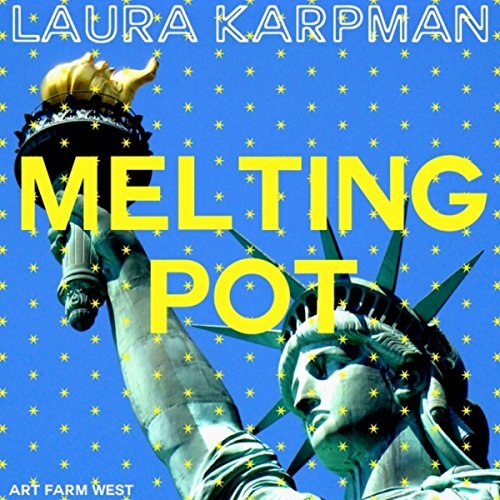Music that stirs the pot, asking what is jazz, classical music, hip-hop, what is the ultimate mash-up of art, race, religion, class, culture that makes America, America.
Melting Pot is a four movement song cycle of through-composed jazz, opera and hip-hop that confronts contemporary social issues through classic American poetry. The sound is a result of a collaborative language that combines the talent of many artists from many musical genres. These four songs feature Medusa (a rapper), Nmon Ford, (a classical baritone), Tonya Pinkins, (an actress and singer), as well as many talented players and remixers. The text is a setting of the political poetry of the Harlem Renaissance and other “jazz” poets. There are also “collaborations” with John Philip Sousa, Scott Joplin, Stephen Foster, as well as political figures (George W. Bush, Lyndon Johnson and others). Timbral manipulation is used as an essential tool for musical and text clarification.
The work is very American, almost a neo-lvesian “mashup.” This form of composition truly interests me; it is the culmination of years of composing with jazz and setting serious poetry. It combines the humanity of analog acoustic elements—the voice and acoustic instruments, with the power of digital technology—in sound design and sampling to create a hybrid musical form whose purpose is to promote justice and re-energize the battle for equality in America.
Scat
When Lumir Vanek, principal bassoonist of the Czech National Symphony orchestra asked me to compose a piece for him, he requested an American dance suite. I puzzled over this request, and eventually found my inspiration in three poems that are considered jazz poems.
1. Dream Boogie
The first movement is based on the poem Dream Boogie by Langston Hughes. A rumbling boogie woogie starts in the bass and continues throughout the movement like a jazz passacaglia, danceable as it is painful.. The music echos the sarcastic refrain…
Sure,
I’m happy!
Take it away!
Hey, pop!
Re-bop!
Mop!
Y-e-a-h!
2. 1926
The second movement is based on Weldon Kees’ evocative poem 1926.
This movement is the slow, painful, easy, hot, sad, expression of the past – the blues most assuredly, Although the poem refers to the song Ja-Da, the sound ja da, ja da, is the uneven sound of a 78 turning on an old record player. The strings make this sound in a rather unusual way, both sung and played. It’s all about the blues.
3. Cabaret (1927, Black & Tan Chicago)
A homesick poem about joy, music, dancing, laced with sorrow, pain, this long movement follows the text. There are quotes from the old blues song, Muddy Waters, that is referred to in the poem. The group chants the scat from the poem Bee–dap–ee–DOOP, dee-ba–dee-BOOP, a light refrain to a heavy load.
Now All Set
I wish the idea for Now All Set had been mine. But it was the idea of my spouse, Nora Kroll-Rosenbaum, who also studied with Milton and understood very well that both Milton and I have lived our lives in jazz. It is indeed daunting to draw from a work of Milton’s, so much compositional material. Every moment that I worked on this piece I worried about it. I wondered if Milton would love or hate it. I wondered if there was any way that I could honor so great a man who gave me so much. In the end, though, my teacher gave me the gift to move beyond any of those concerns and the piece took on its own life and became its own beast. When I started composing Now All Set, the first thing I did was listen for the “groove” in Milton’s music. There it was, hardly hidden. And that for me was my first opening. As in studying any great score, I grew to understand All Set so much better by composing “at it.” I wanted Now All Set to by played by jazz players, and so I contacted my dear friend and sublime musician, Shelly Berg, a great musical mind. He suggested that we record the piece at The Frost School, where he is the dean, with a combination of students and faculty. This, of course, both in practice and conceptually, was perfect, the students playing with the masters is of course what this piece is after all, all about. You will hear not only Milton’s notes repeated, exploded, his designs, but his own voice, commenting in joy and occasionally questioning my choices. This is my love letter to Milton, who is with me everyday.
There are overt references on every compositional level to the original piece. I leave it to those who have spent quality time with All Set to enjoy or despise those genetic connections.

